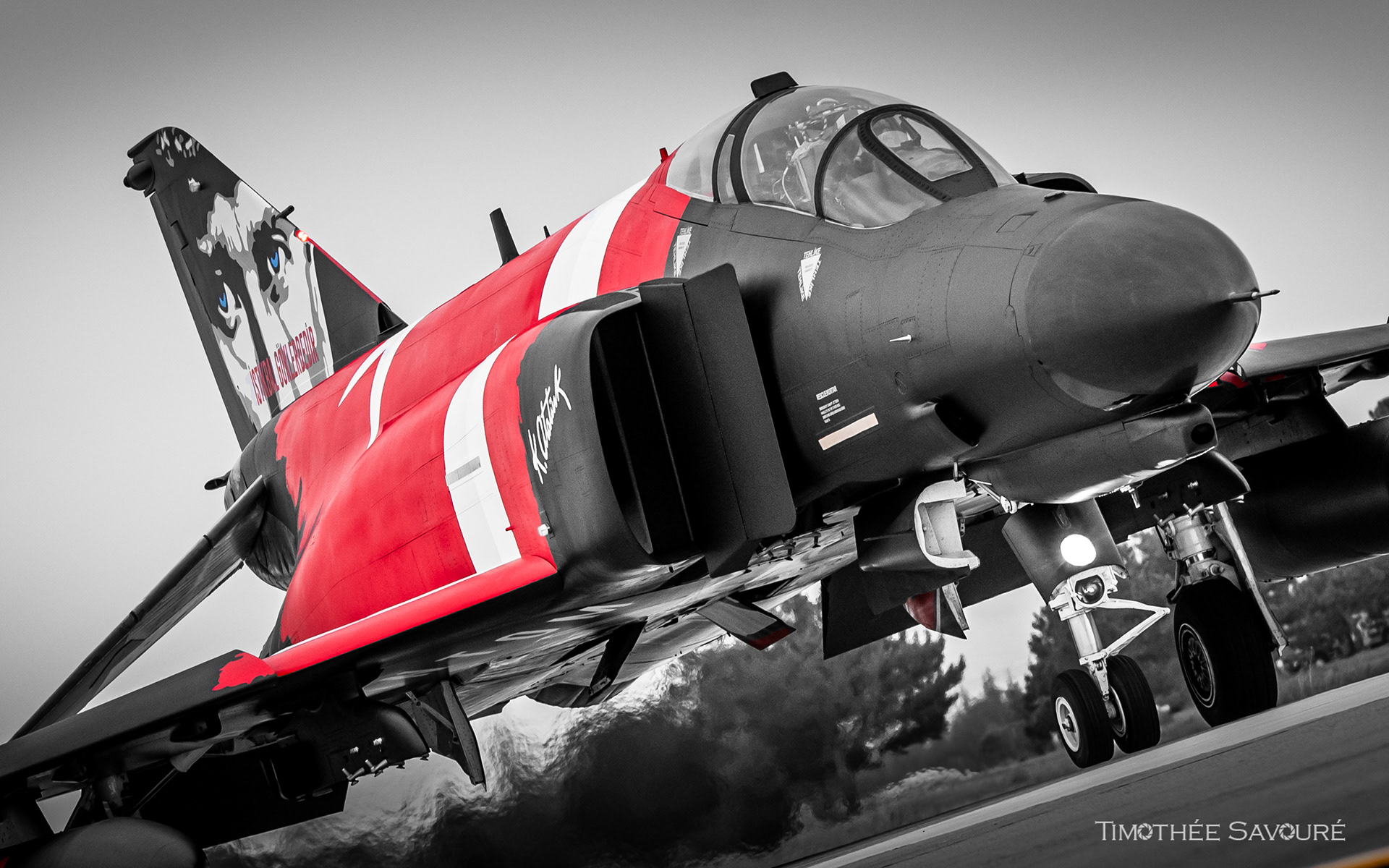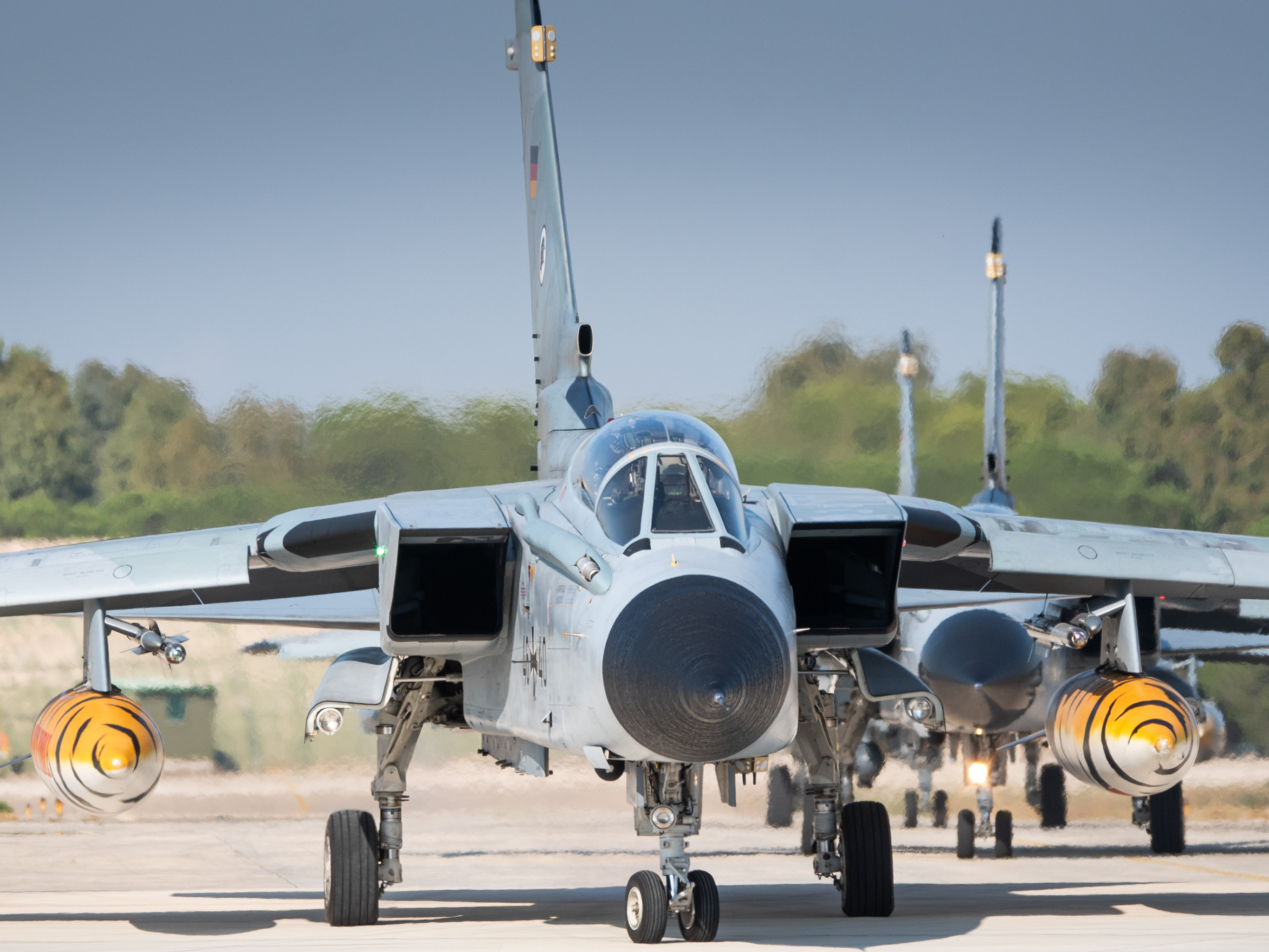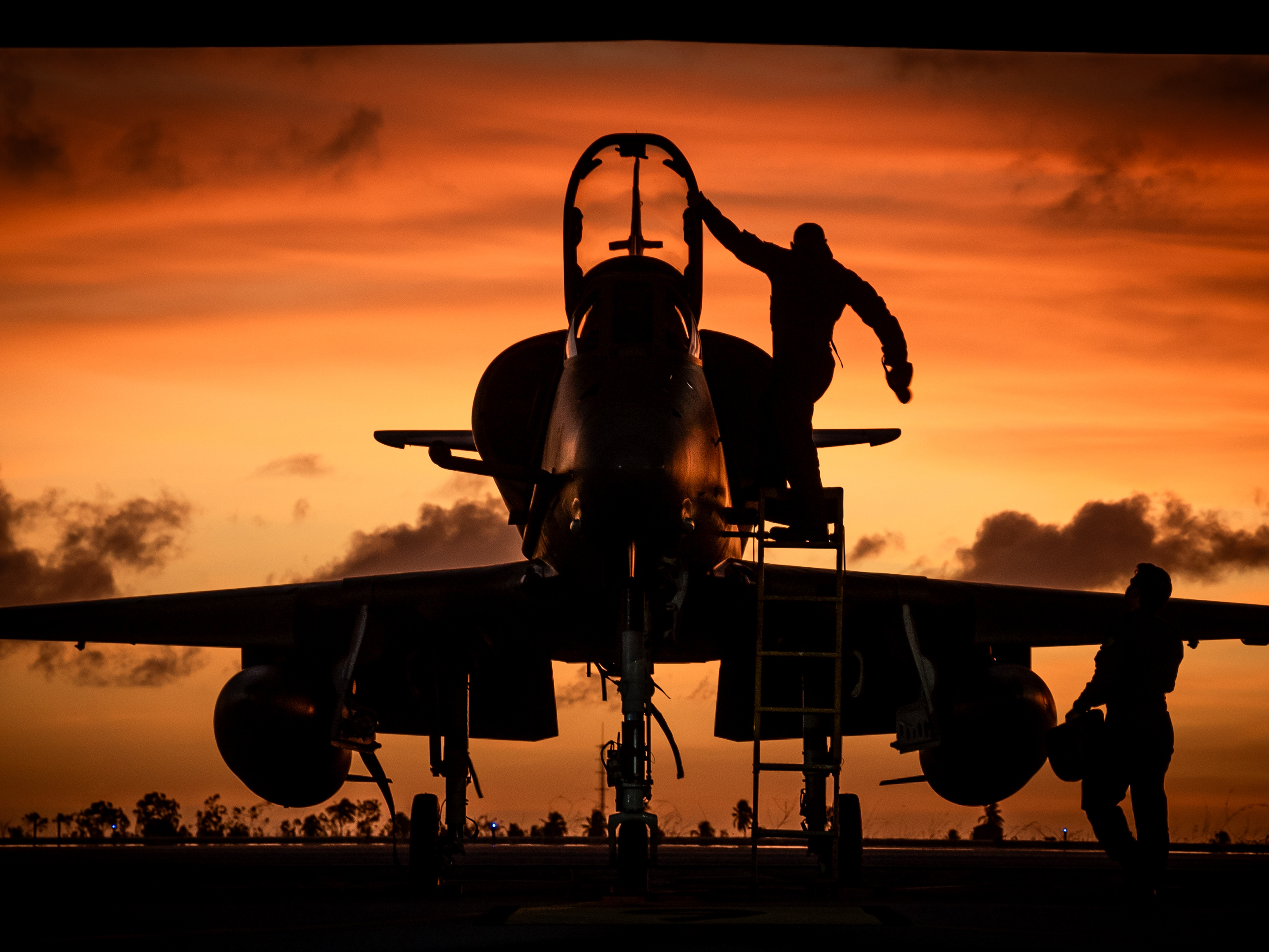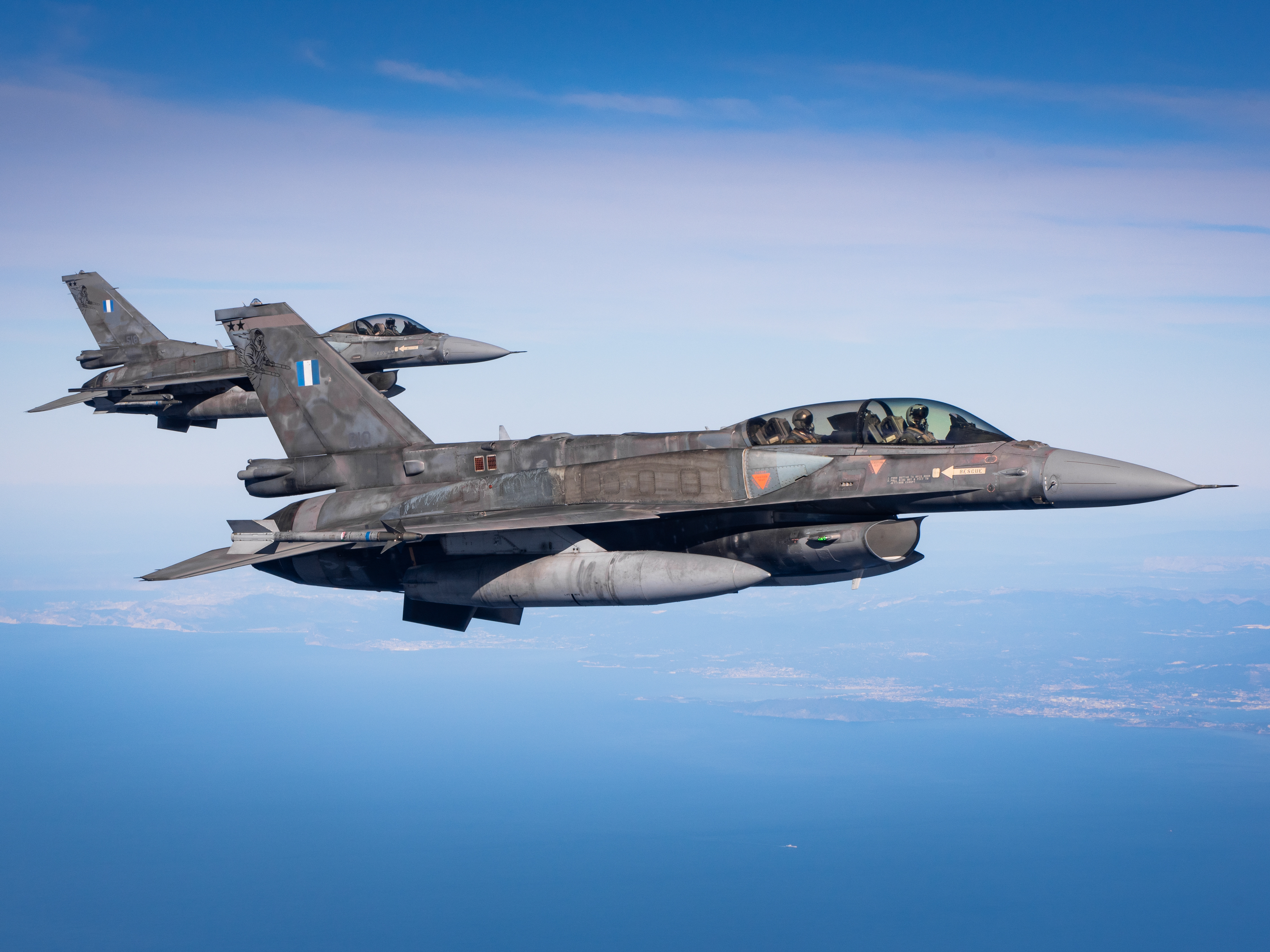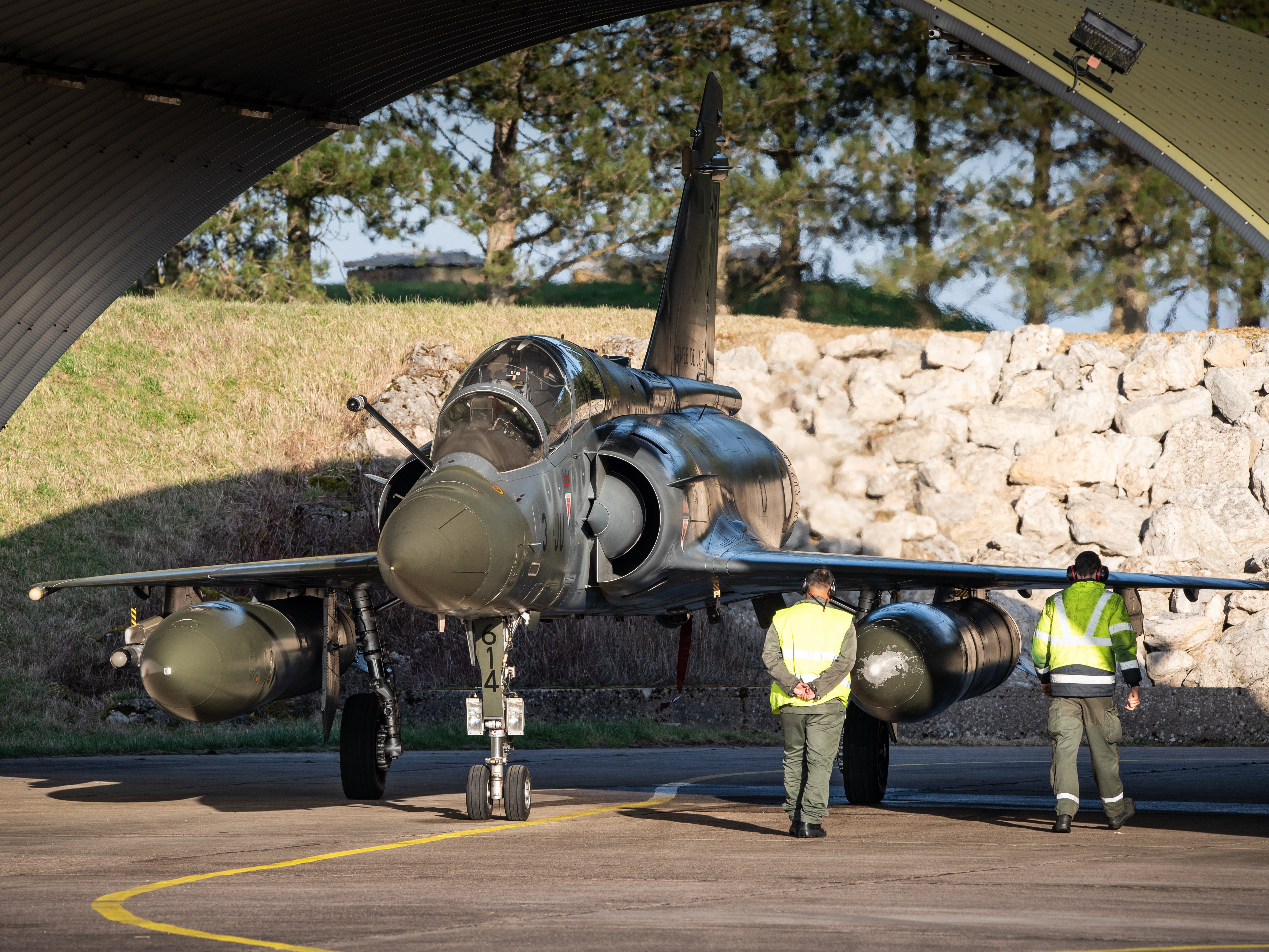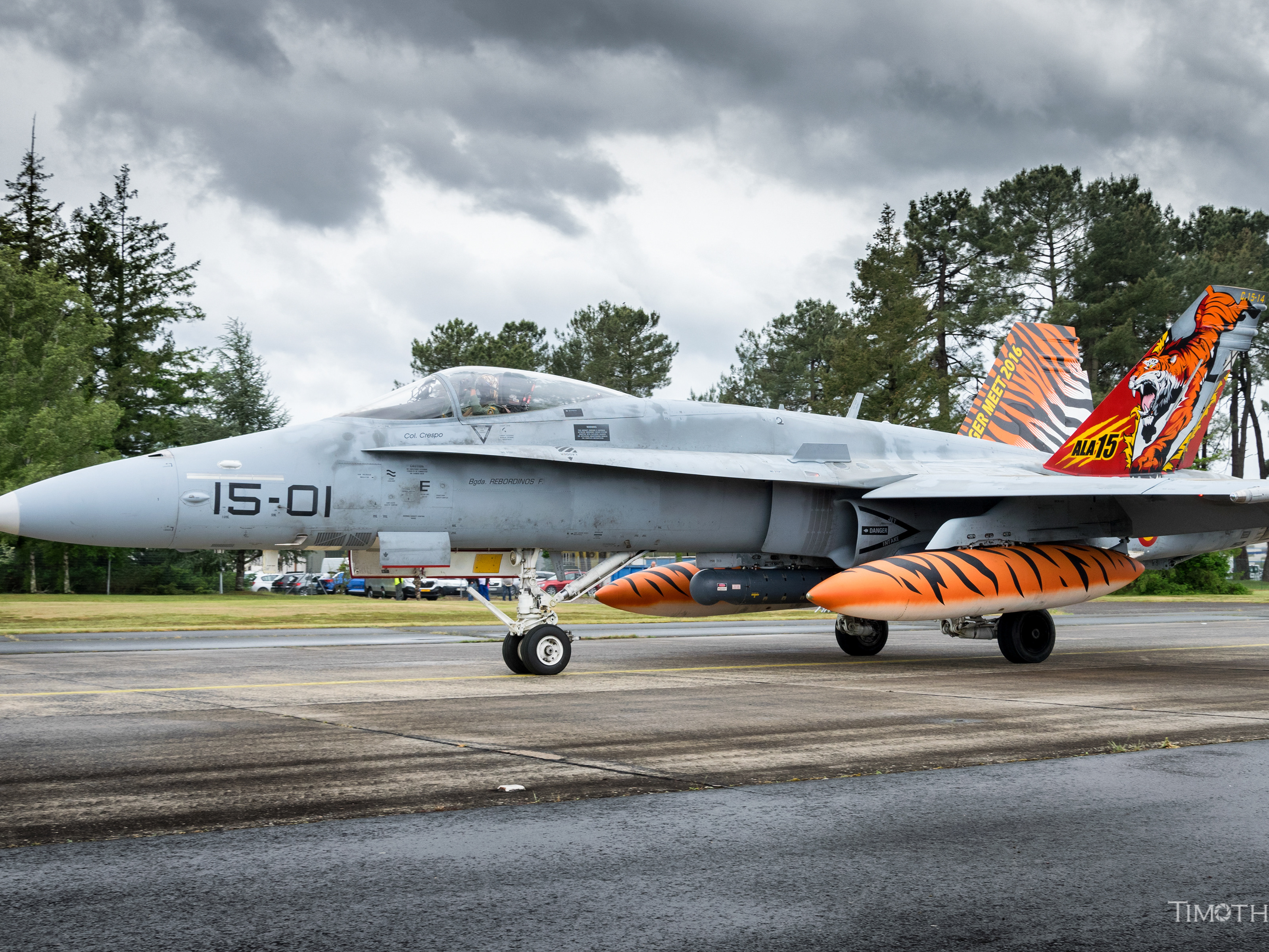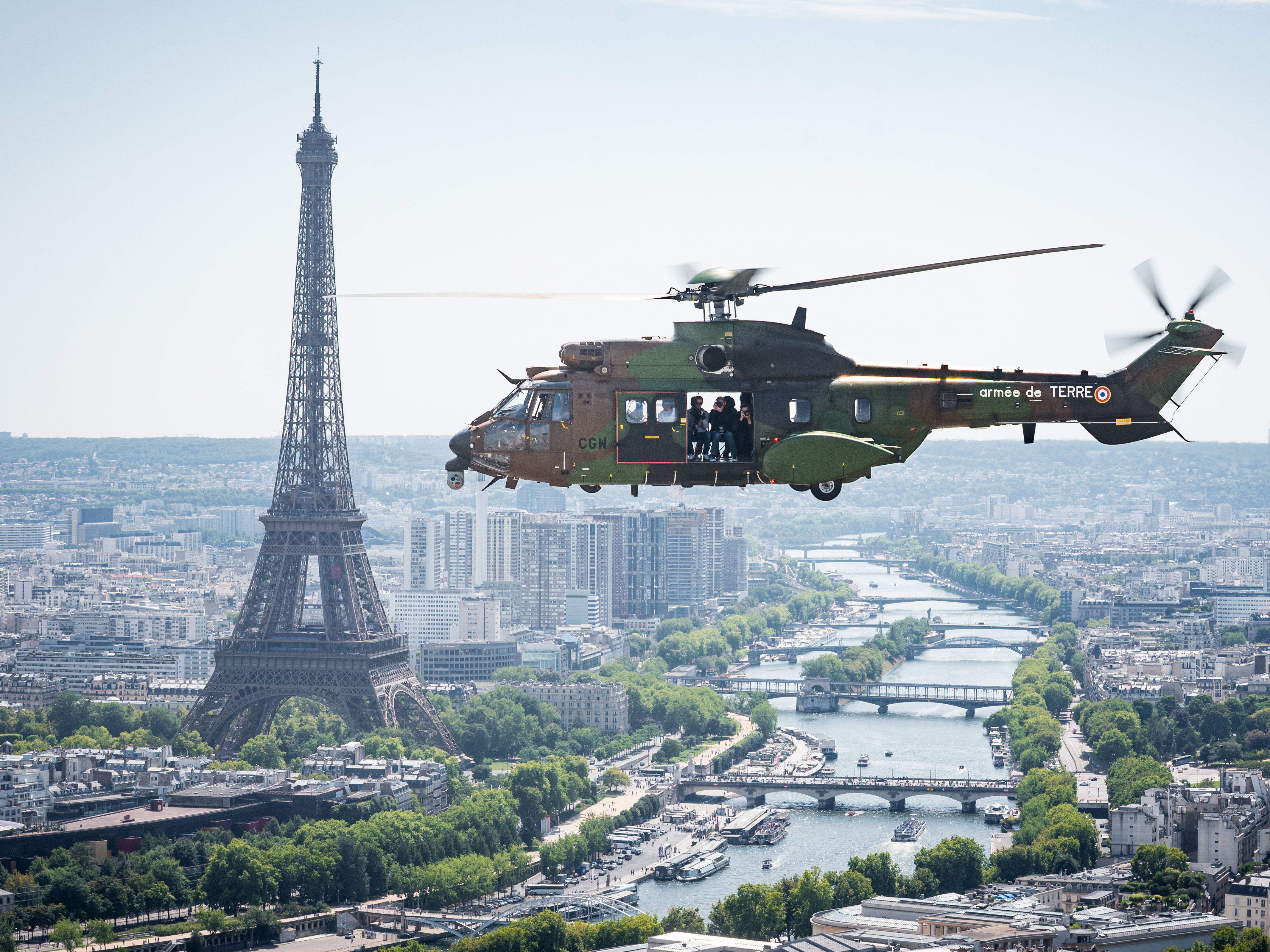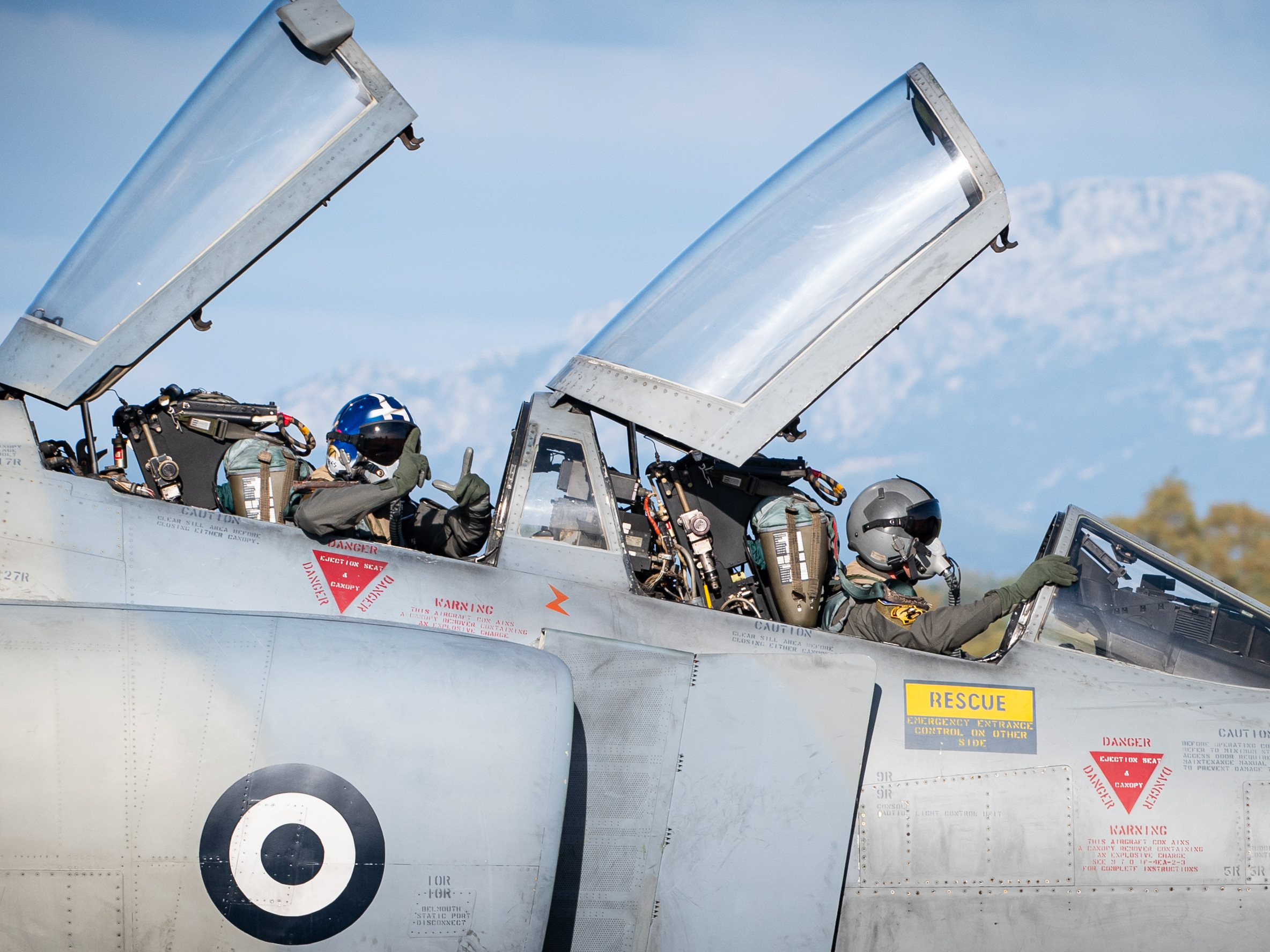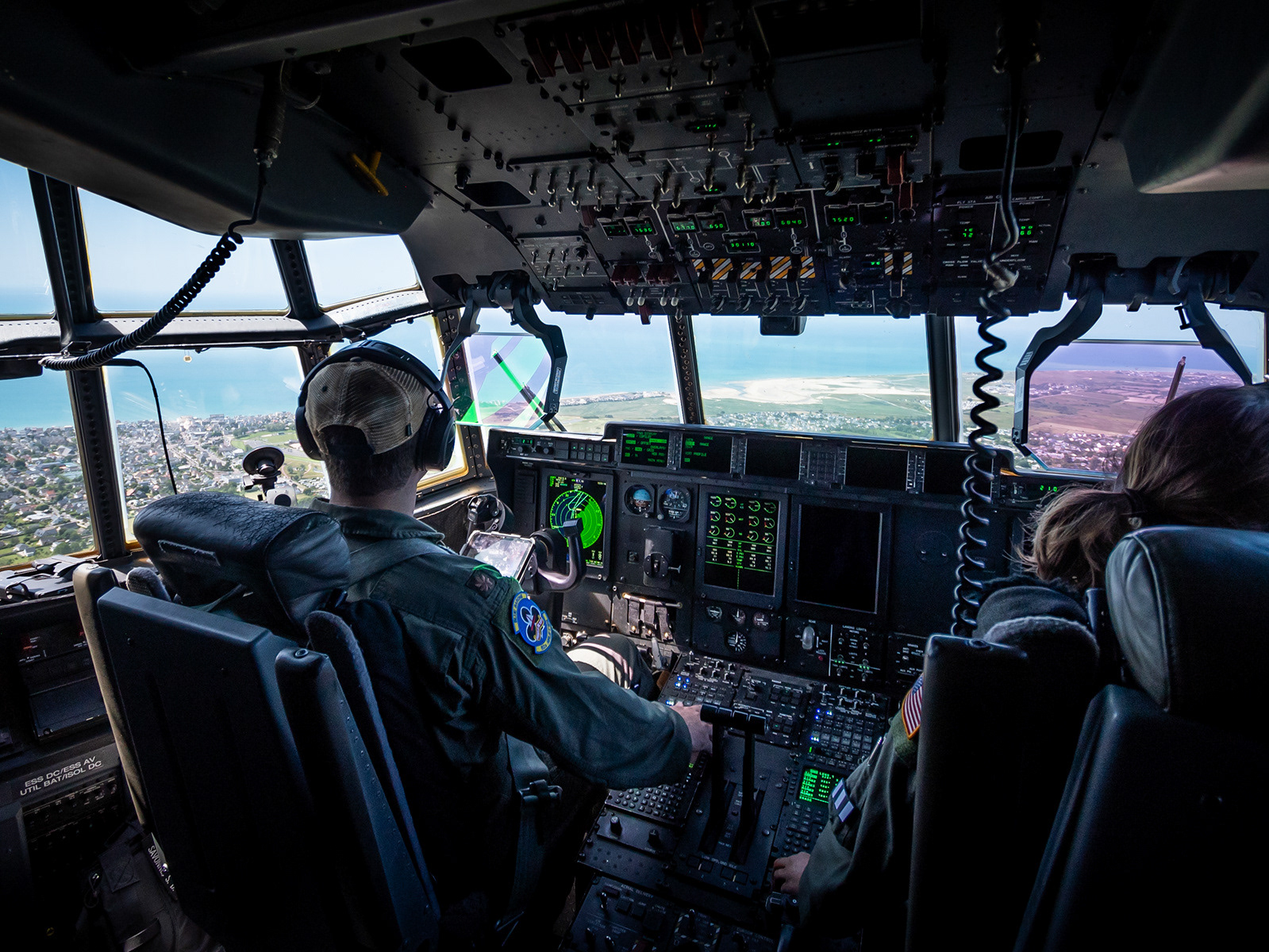In November 2024, the Turkish Air Force commemorated the 50th anniversary of the F-4E Phantom II's service with a series of events centered at the 1st Main Jet Base in Eskişehir. The celebrations took place during the weekend of November 16-17 and featured both aerial displays with a low level part and base activities.
The F-4 Phantom amongst the Turkish Air Force
The F-4 Phantom II is a twin-seat, twin-engine, supersonic fighter jet originally developed by McDonnell Douglas in the 1950s. The F-4's primary mission was to serve as a fighter-bomber for ground attack; it also operated as an air superiority and reconnaissance aircraft (with the RF-4 variant). It became one of the most widely used fighter jets in history, with more than 5,000 units built and operated by around twelve nations. Nowadays, only three countries still operate the jet: Iran, Greece, and Türkiye, following the recent retirement of the last Japanese and American Phantoms.
In the 1960s, the Türk Hava Kuvvetleri (THK, Turkish Air Force) operated a fleet of F-84 Thunderstreak and F-100 Super Sabre aircraft, as well as F-5 Freedom Fighters and F-104 Starfighters. With rising tensions with Greece at the beginning of the 1970s and in an effort to modernize its fleet, Türkiye launched the Peace Diamond project, acquiring around forty McDonnell Douglas F-4E Phantom II aircraft. The procurement included both newly built aircraft and second-hand units from the United States, Germany, and other NATO allies. In 1974, the 113 ‘Tayfun’ Filo (113th ‘Typhoon’ Squadron) became the first operator of the type within the THK. Over the decades, Türkiye continued to expand its F-4 fleet, eventually acquiring over 200 units. Throughout the years, the Phantom became the main workhorse of the THK alongside the F-16 Fighting Falcon and still plays a vital role in the country's defense today. A total of nine squadrons have operated the fighter: 111, 112, 113, 131, 132, 171, 172, 173, and 401 Filos.
To keep the aircraft up to date, Türkiye initiated a modernization program in the late 1990s. The most significant upgrade was the F-4E 2020 Terminator program, carried out in collaboration with Israel Aerospace Industries (IAI), with about fifty aircraft being modified. The main changes included upgraded avionics, an improved radar, and enhanced weapons systems, allowing the F-4 to remain a key player in modern combat scenarios. The first F-4E 2020 standard aircraft were delivered to the Turkish Air Force at a ceremony held in January 2000 at 1. Ana Jet Üssü (1st Main Jet Base), Eskişehir.
While the F-4 Phantom II is set to be gradually phased out in favor of newer aircraft (such as the F-16 Fighting Falcon and, eventually, the KAAN, designed and built in Türkiye), it continues to serve in limited roles. Presently, only one Turkish squadron of F-4s remains—the 111 Filo ‘Panterler’, stationed at Eskişehir Air Base and operating between 30 and 40 aircraft. The Phantom is still active in multinational exercises both in Türkiye and abroad. For instance, the Poggio Dart 23 exercise at Istrana Air Base (Italy, December 2023) included the participation of F-4Es. The aircraft also regularly take part in the Anatolian Eagle exercise at Konya Air Base, as was the case in 2023. You can find my report about the exercise here: Jet Blast Area - Anatolian Eagle 2023.
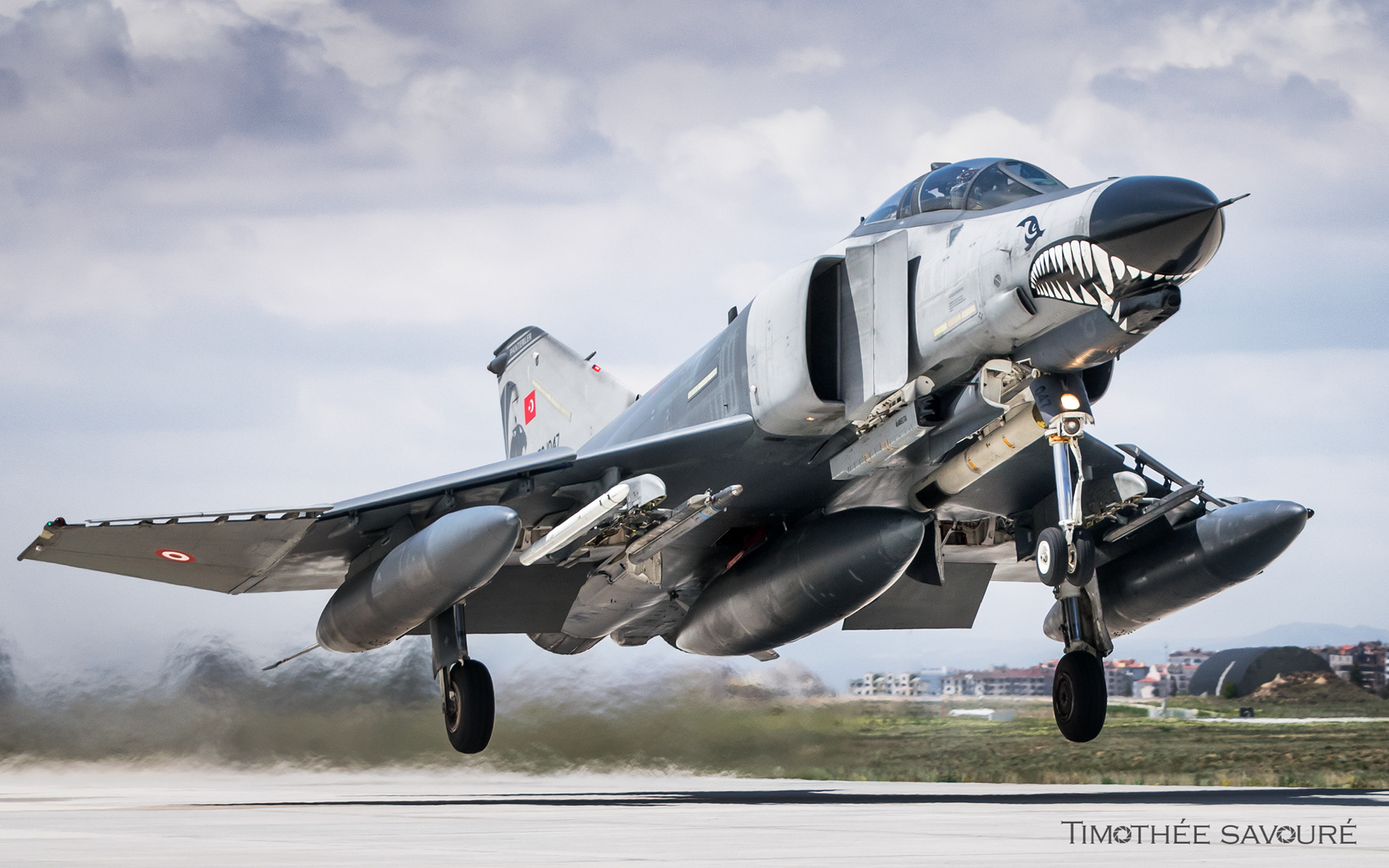
A 111 Filo F-4E Phantom taking-off during Anatolian Eagle 2023 in 3. Ana Jet Üssü, Konya
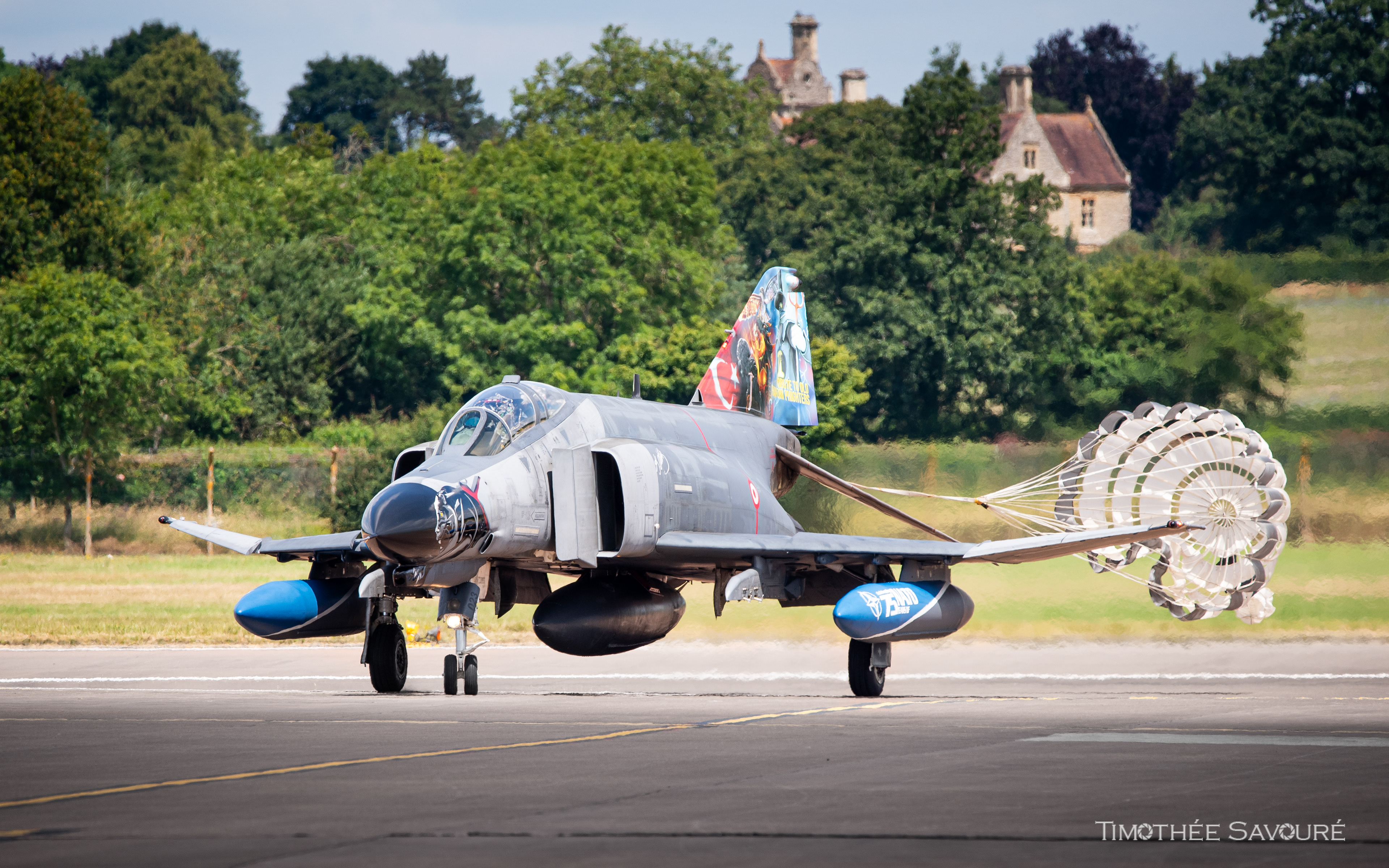
A specially decorated F-4E Phantom taxiing after landing in RAF Fairford, during RIAT 2024
Low Flying activities
To celebrate 50 years of service of the legendary F-4E Phantom, the Turkish Air Force invited a few hundred photographers and spotters to witness a historic event in the country. They provided precise coordinates and a meeting time for some low-level activities with the Phantom, without giving many more details. The meeting point was in the mountains, a two-hour drive north of Eskişehir Air Base, on November 16th, 2024. The Air Force does not have specific areas for low-level training, so they had to select the best location, where the width and depth of the valley would be ideal for both flying and photography. The map indicated a hill near the Sakarya River, not far from a dam and a water reservoir.
No one really knew what to expect that day, as such an event had never been organized before, and not many spotters had the opportunity to travel to the region. After the drive, aviation enthusiasts arrived at the given location, only to discover the breathtaking scenery of the Turkish mountains. The exact time of the flypast had yet to be confirmed, especially since the weather was not cooperative, with low clouds covering the area. Members of the Türk Hava Kuvvetleri, including a pilot, were on-site to assess the weather conditions and determine if the area was safe for flying. Around 14:00 local time, after a few hours of waiting, rumors began circulating that the planes would soon be arriving. "Two Phantoms, five minutes away!" a Turkish enthusiast announced after 15:00.
Excitement started to rise among the photographers as they grabbed their cameras and checked their settings. Our minds were filled with many questions: How close will they be? Will they come one by one or as a pair? At what speed and altitude? Are we positioned correctly? This last question was the hardest to answer since the hill was steep, and no one could have a clear view of both the eastern and western sides of the valley. Additionally, no information had been given about the direction of the passes. I was positioned to the right of the rock, with a view toward the east. "Coming in from the left! One Phantom!" some photographers shouted. That special, silent, and concentrated atmosphere preceding a rare aircraft appearance set in for a few seconds before a distant but distinct engine sound echoed through the valley. Small at first, it became powerful within seconds, although we could tell the engine was at a low throttle setting. The first F-4 Phantom (registered 77-0303) suddenly blasted past very close to the hill, wearing the specially designed livery for the occasion, featuring a large Turkish flag on the top and the famous "Phantom Phorever" Spook emblem on the belly. The livery had not been disclosed to the public, so everyone could discover it at the same time. The tail featured a panther logo on the left side (the emblem of the 111 Filo "Panterler"), as well as a portrait of Atatürk with the writing ‘İstikbal Göklerdedir’ (The future is in the sky). The second aircraft (registered 73-1052) followed a few seconds later, painted in a classic grey scheme, which was very appreciated by the photographers.
After that first pass from the left side of the hill, the next flypasts occurred from the right, confirming our good choice of positioning. Each aircraft performed twelve passes, showcasing all possible angles: top, bottom, flat, high-G maneuvers—coming closer and closer to the photographers, even going so far as to blow the mountain with jet blast (a great tribute to the name of this website!). Each pass was better than the previous, and the joy of the photographers was a great reward for the Turkish Air Force members on site. After the final flypast, which was from left to right, spotters applauded and reviewed their videos and photos. For many, it was one of the most extraordinary experiences of their careers, and everyone knew they had just witnessed something truly unique.

The specially painted F-4E Phantom for the 50th anniversary during the low level flight - 77-0303
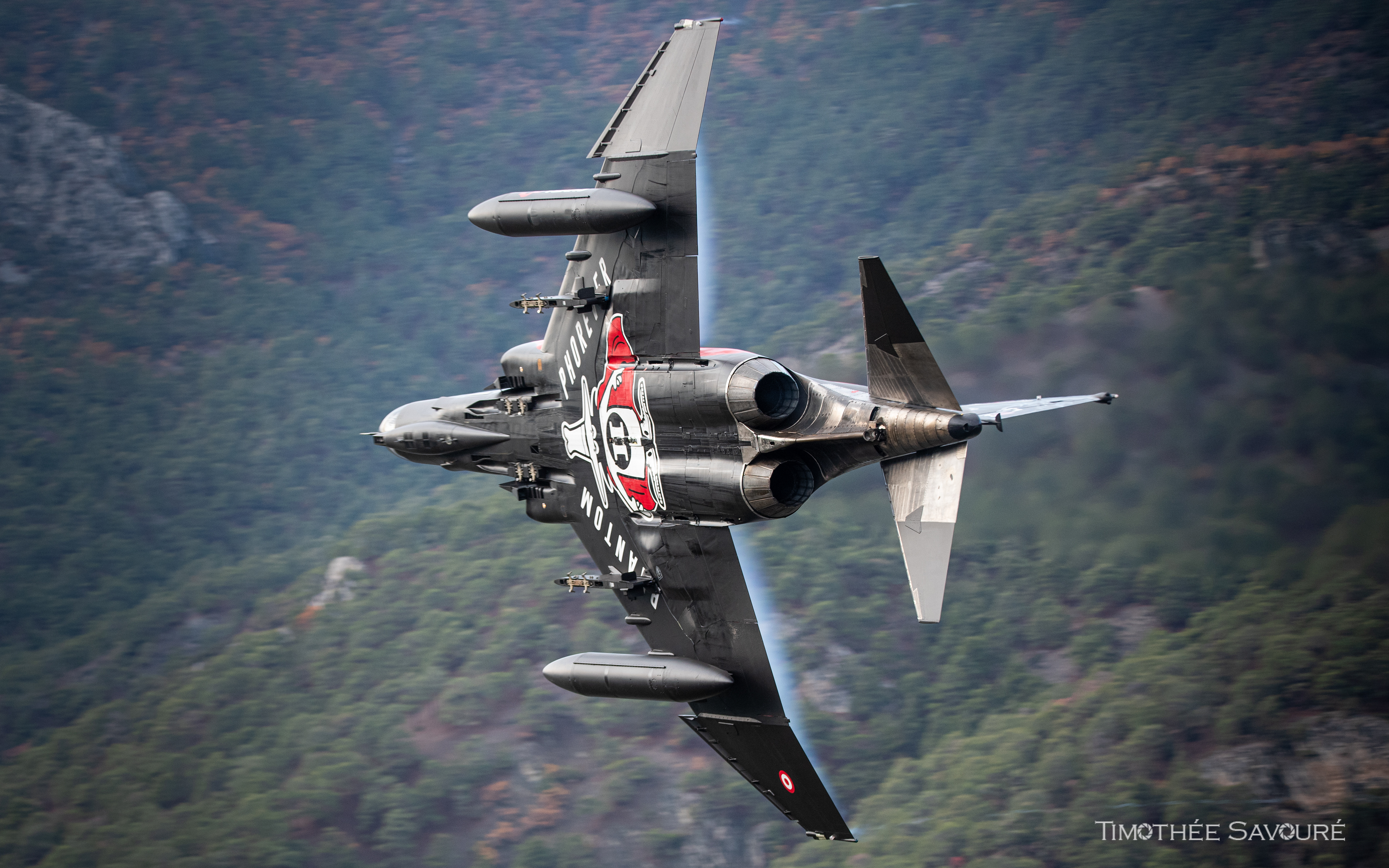
The specially painted F-4E Phantom for the 50th anniversary during the low level flight - 77-0303
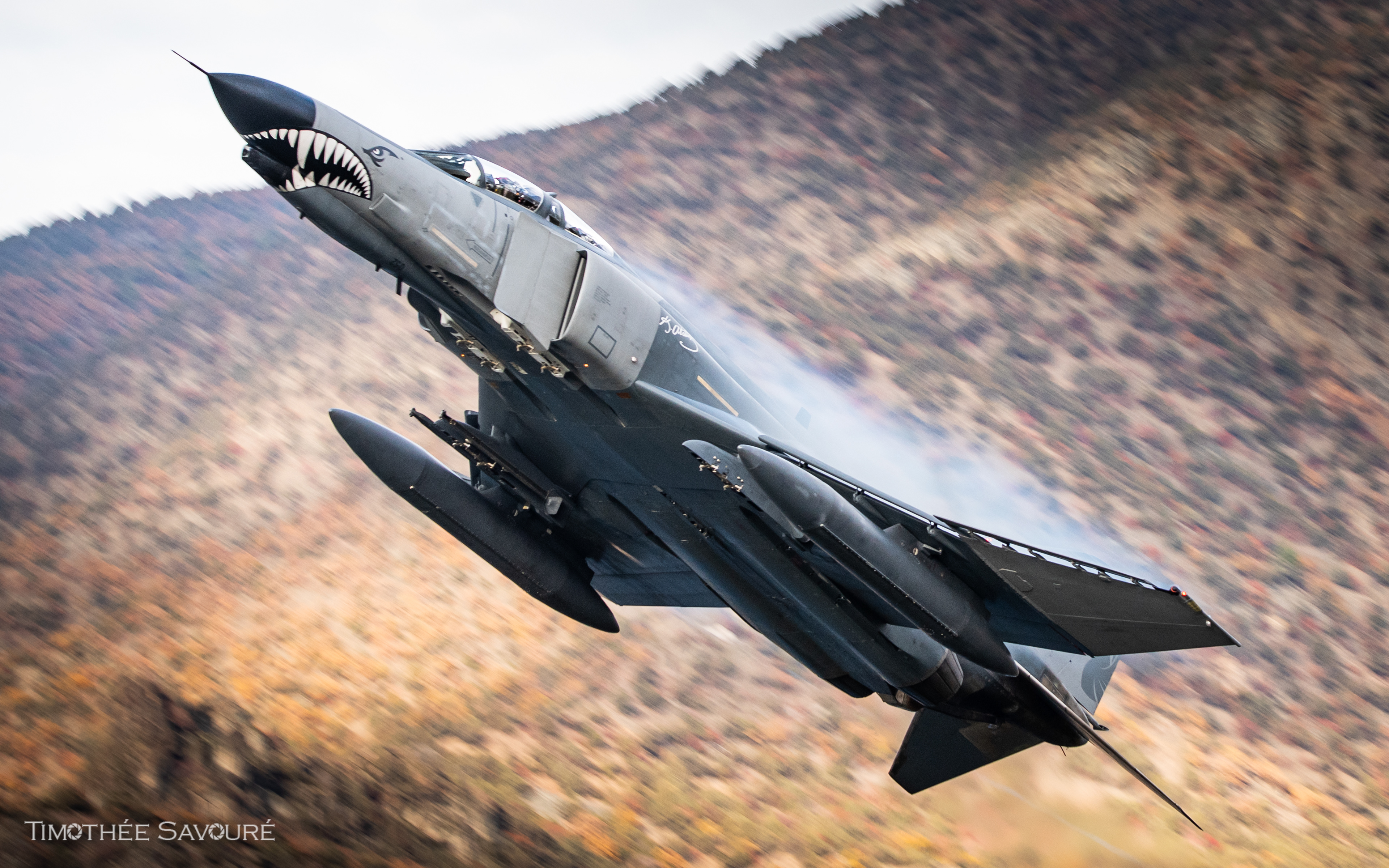
The second F-4E Phantom during the low level flight - 73-1052
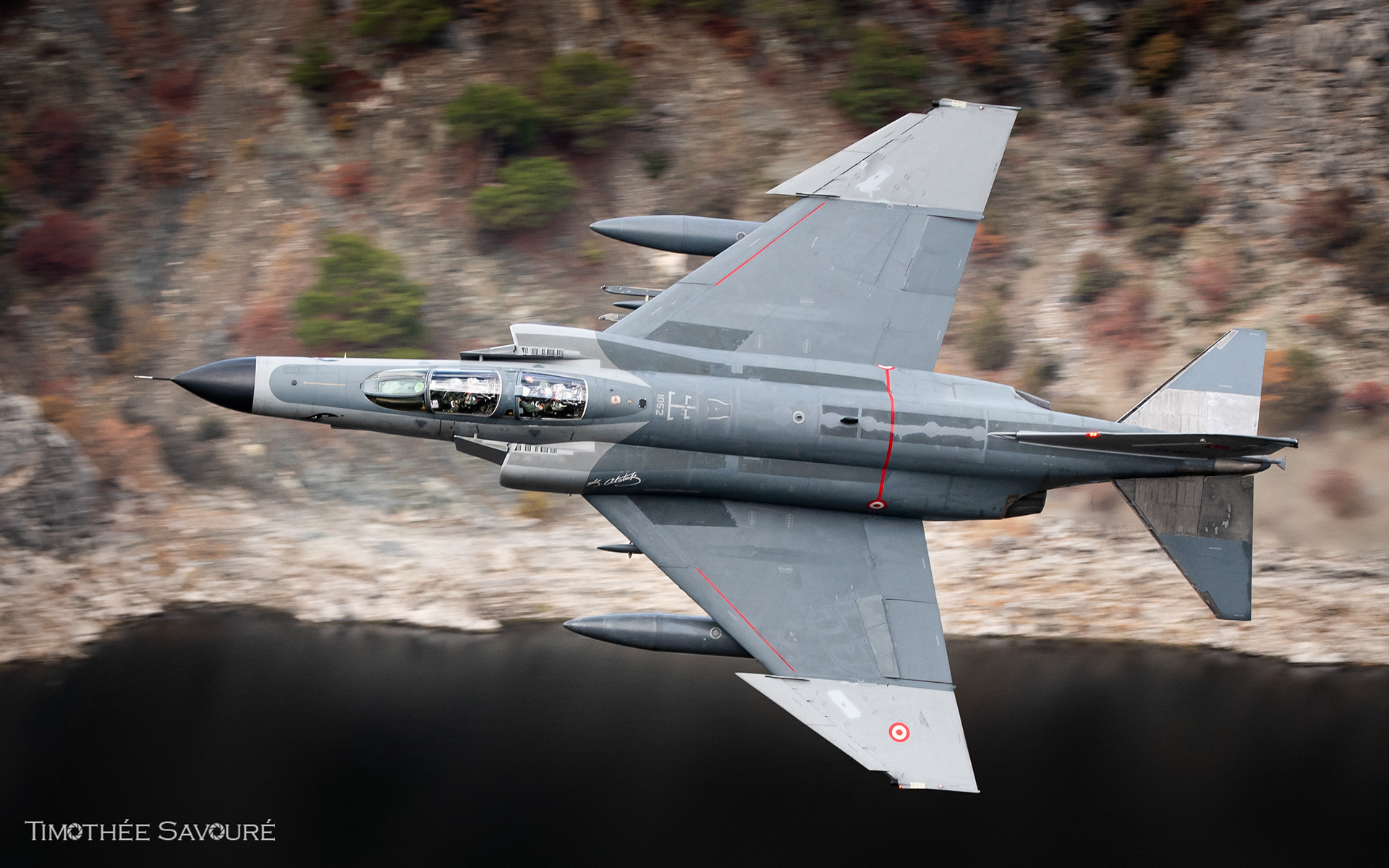
The second F-4E Phantom during the low level flight - 73-1052
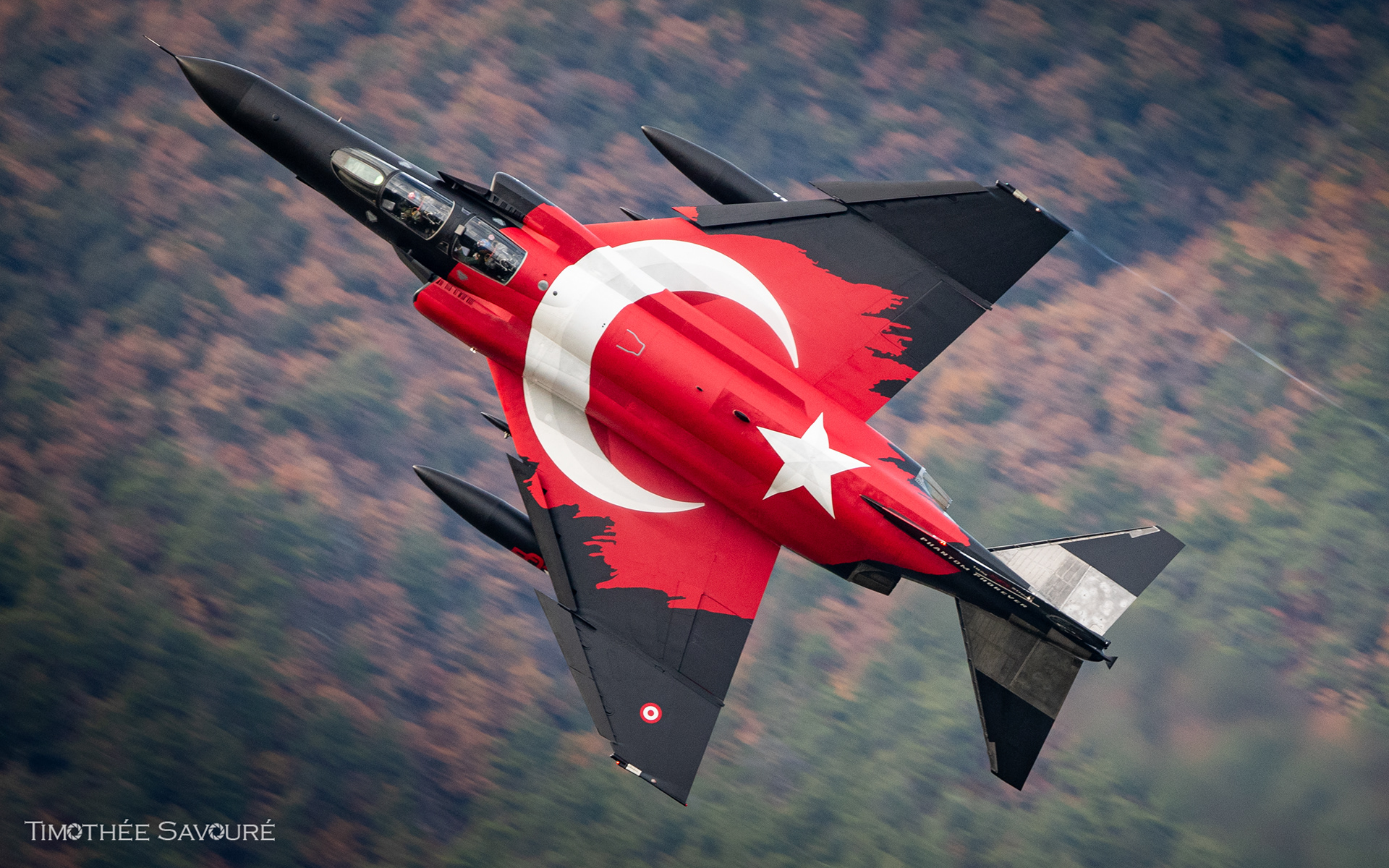
The specially painted F-4E Phantom for the 50th anniversary during the low level flight - 77-0303
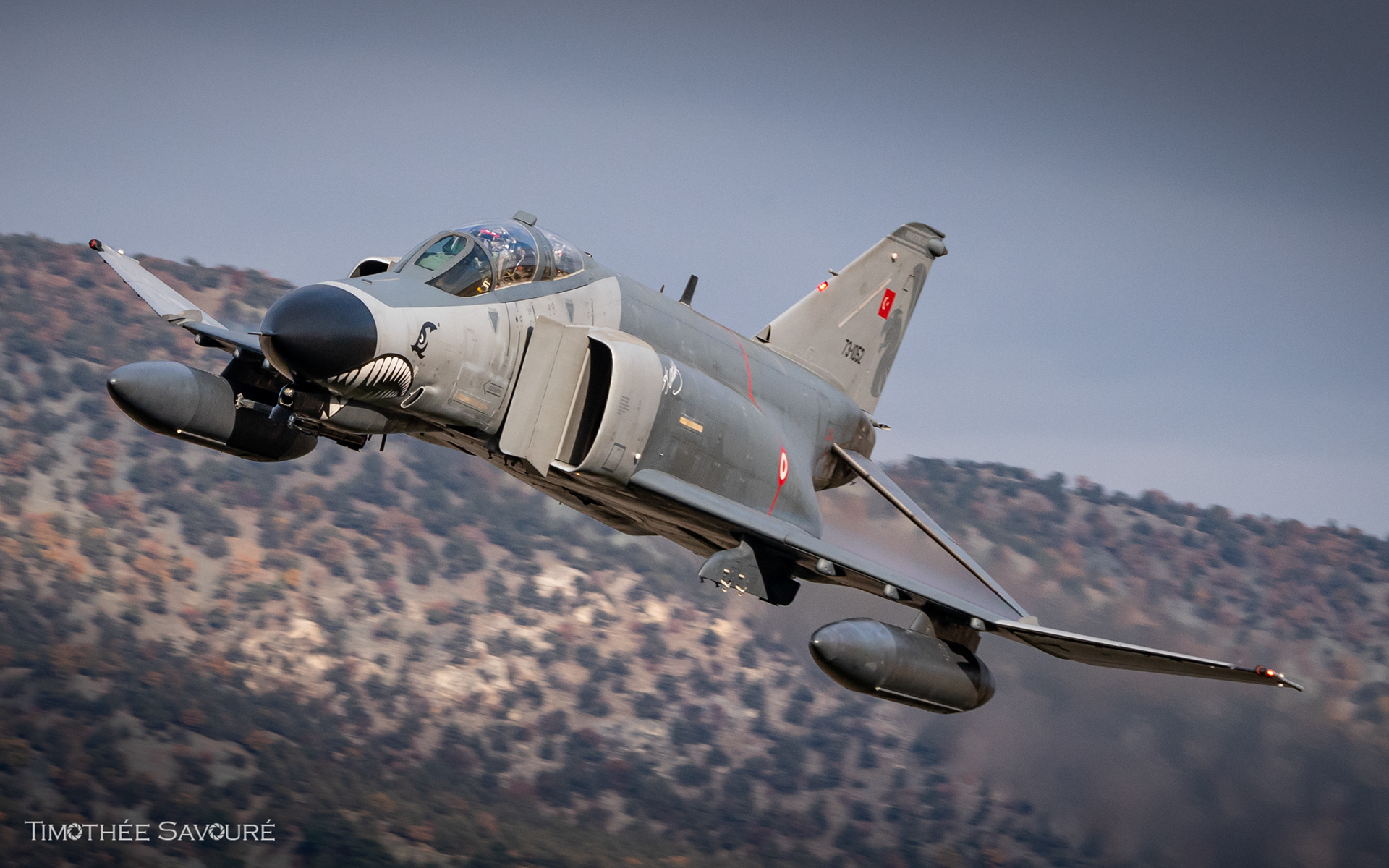
The second F-4E Phantom during the low level flight - 73-1052
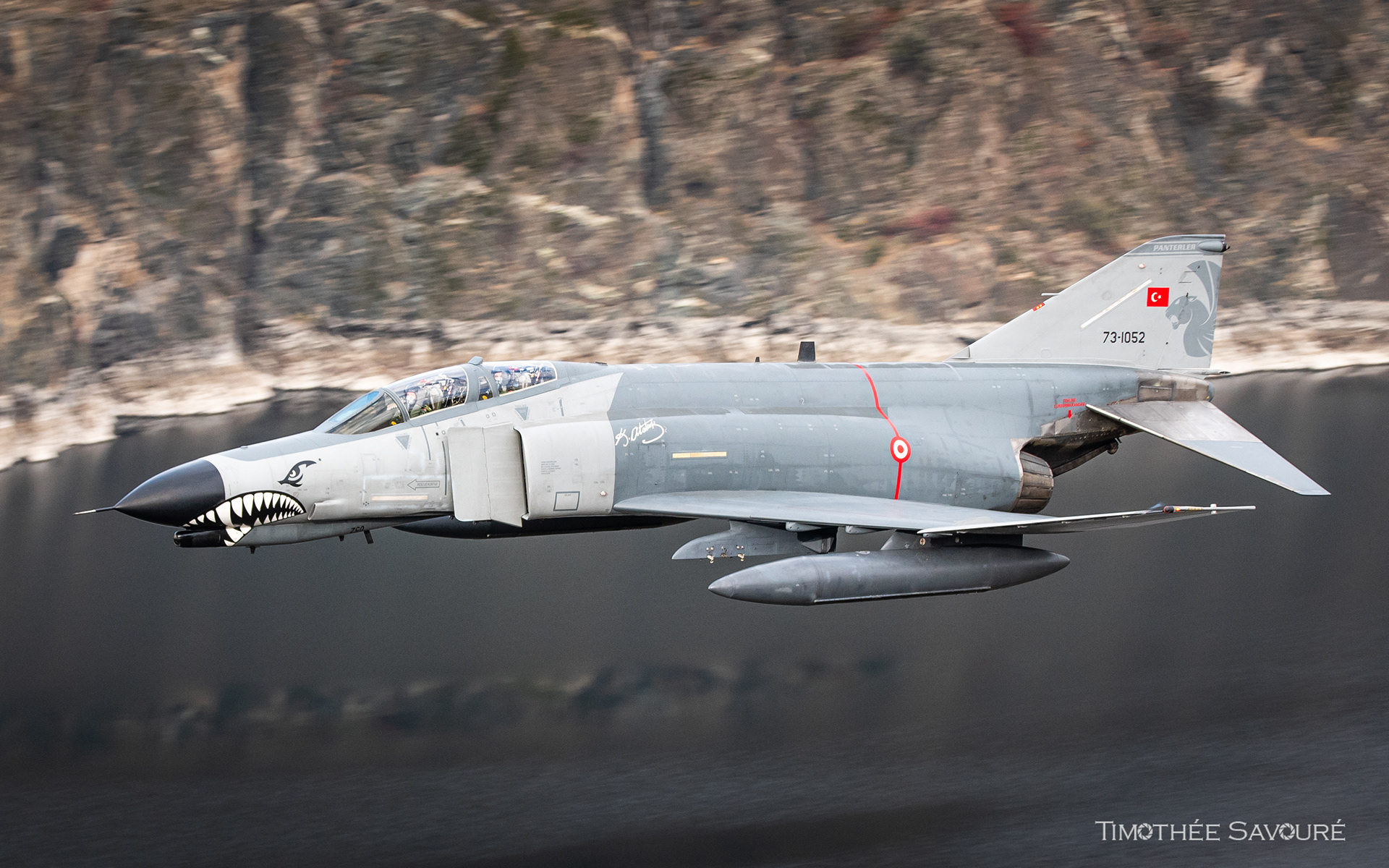
The second F-4E Phantom during the low level flight - 73-1052
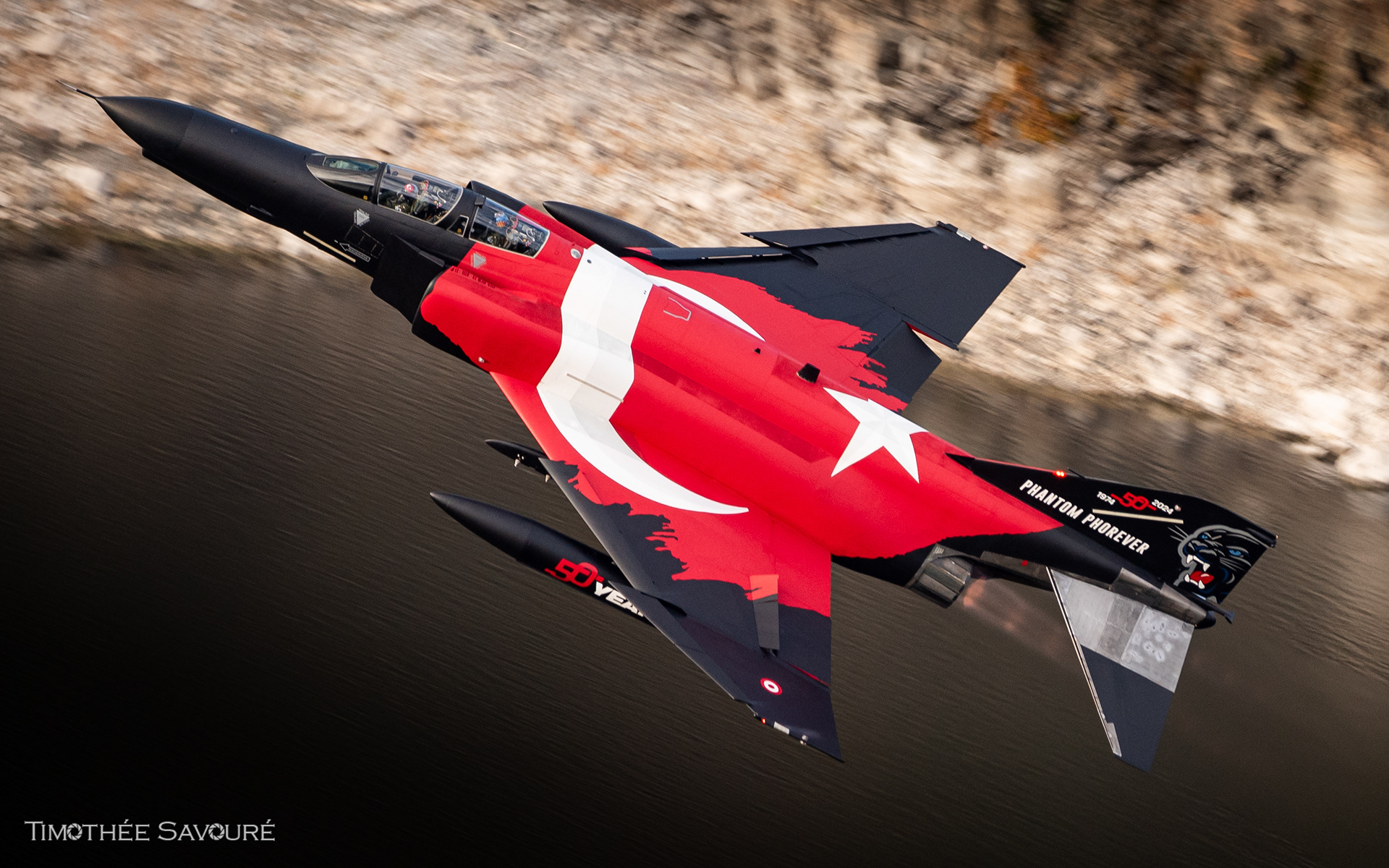
The specially painted F-4E Phantom for the 50th anniversary during the low level flight - 77-0303
On-base activities
The next day (November 17th, 2024), around 650 photographers gathered at the 1st Main Jet Base in Eskişehir for the 50th anniversary ceremony. Buses transported everyone between the main taxiway and the runway to witness some Phantom action in the best possible conditions. Four F-4Es took off, including the specially painted aircraft seen the day before, with Air Force Commander Ziya Cemal Kadioğlu himself flying it. The aircraft performed a series of flypasts over the air base before returning and parking on the squadron's apron, where Air Force officials and some journalists were positioned.
Lunch was provided by the Turkish Air Force, featuring a kebab barbecue available for everyone, accompanied by music from The Eagles of Jazz. Additionally, a few stands offered F-4 memorabilia, including patches, t-shirts, and hats. Visitors also had the opportunity to approach the static display area, where five Phantoms and their armament could be seen up close. This relaxation time was very welcome for everyone. After that, the same buses took everyone back to the action area between the taxiway and the runway. In the afternoon, four more F-4s flew and performed impressive passes over the runway and photographers, providing excellent opportunities for action shots.
Around 17:00 local time, six more F-4 Phantoms started up and taxied to the holding point, signaling the start of the highly expected Elephant Walk teased by the Turkish Air Force. Among the newly started aircraft were two F-4s from the 401 Filo test squadron, rarely seen in public, adding a special touch to the lineup. After the airborne aircraft recovered with their drag chutes, they all lined up on runway 26 in formation and taxied to the spotter area at very low speed. The sight of ten F-4 Phantoms taxiing towards our position was truly impressive and will be etched into our memories and aviation history. The aircraft stopped near the spotters for around ten minutes, giving everyone plenty of time to enjoy the moment and capture all the necessary shots. After that, each aircraft returned to its parking position, and photographers were driven back to the base entrance, with smiles on every face.
A warm thank you to the Turkish Air Force PAO and the 111 Filo for organizing such a high-quality weekend and for their hospitality. Not many air forces around the world show such deep respect for the legacy of their fleet and aircraft. Everyone who attended undoubtedly had an unforgettable weekend and will continue to pay tribute to the F-4 Phantom for the rest of their lives.
See you for the 60 years anniversary!
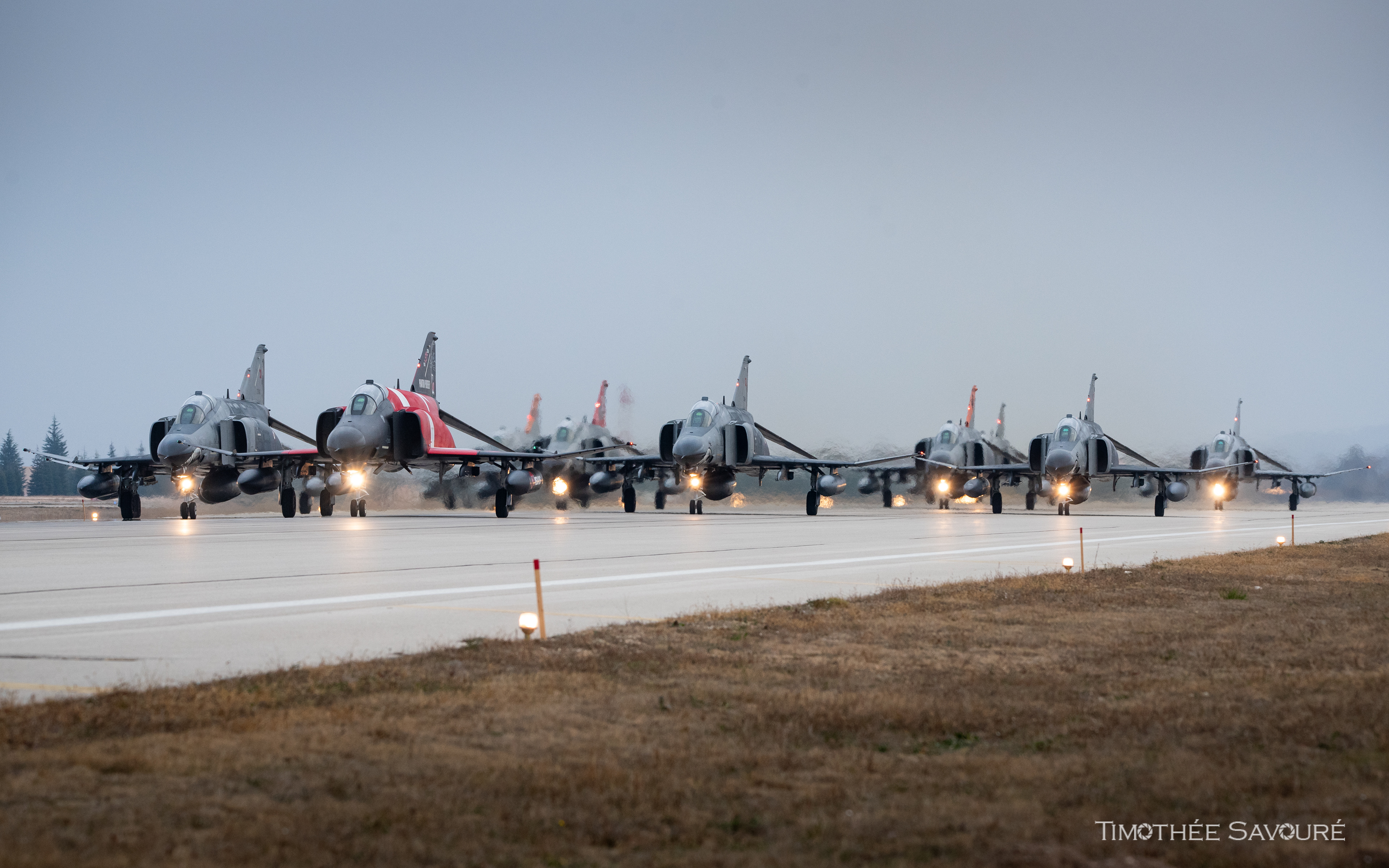
Elephant Walk with 10 Turkish Air Force F-4E Phantom II

F-4E 73-1048 slowing down on Eskisehir runway with the drag chute deployed
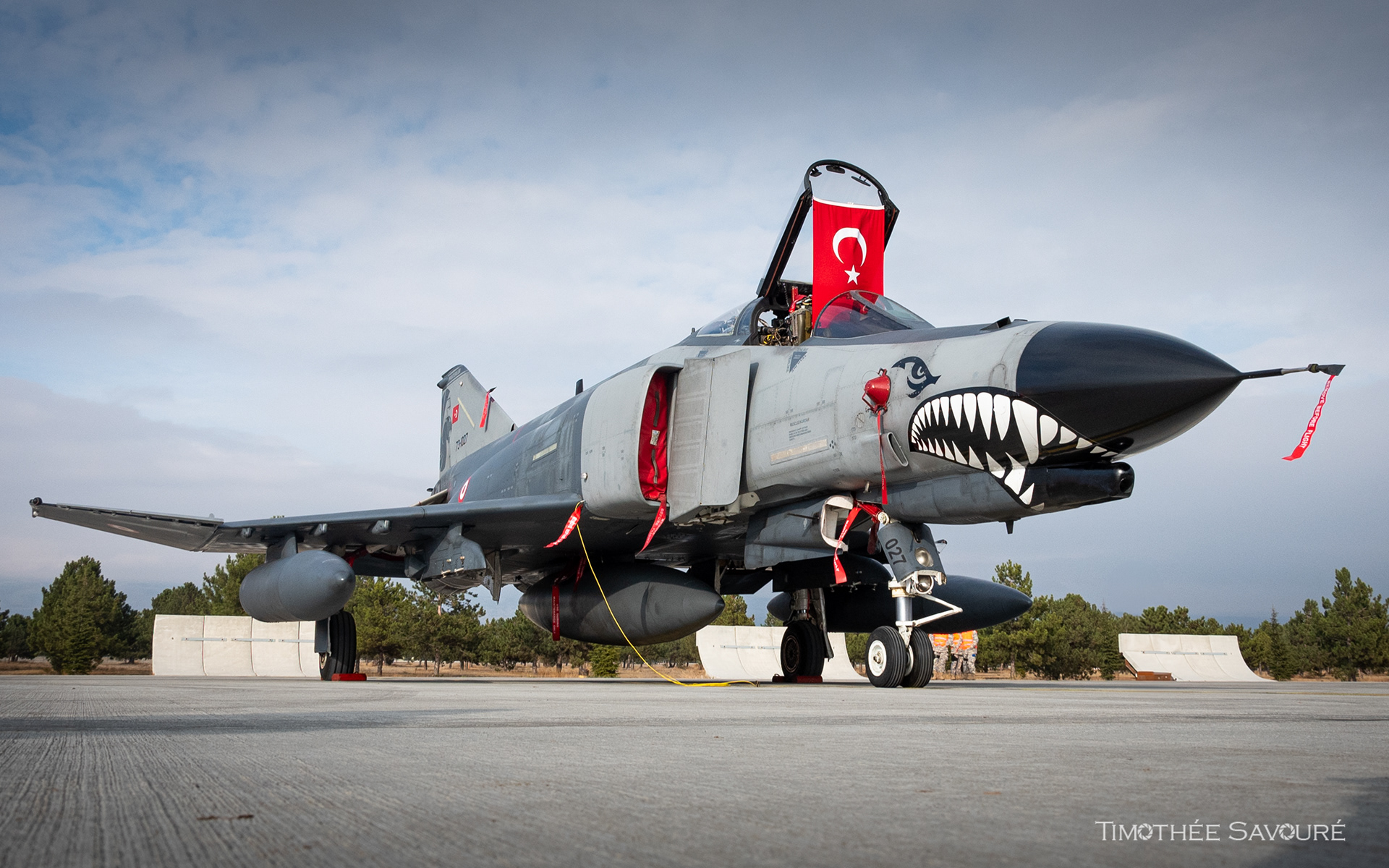
Static display with this F-4 Phantom with a Turkish flag - 73-1027
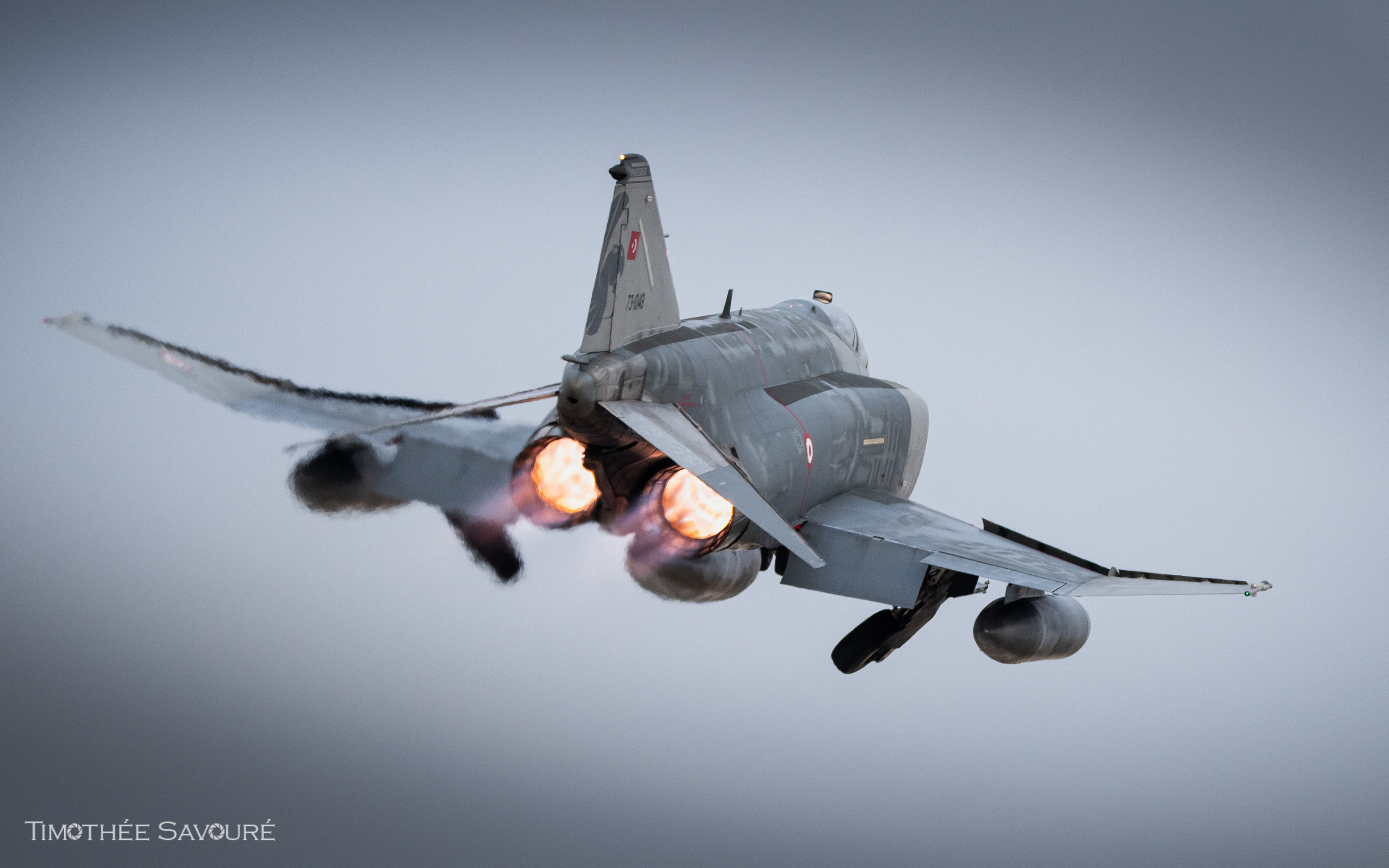
Full afterburner for this Turkish Phantom upon take-off in Eskisehir - 73-1048
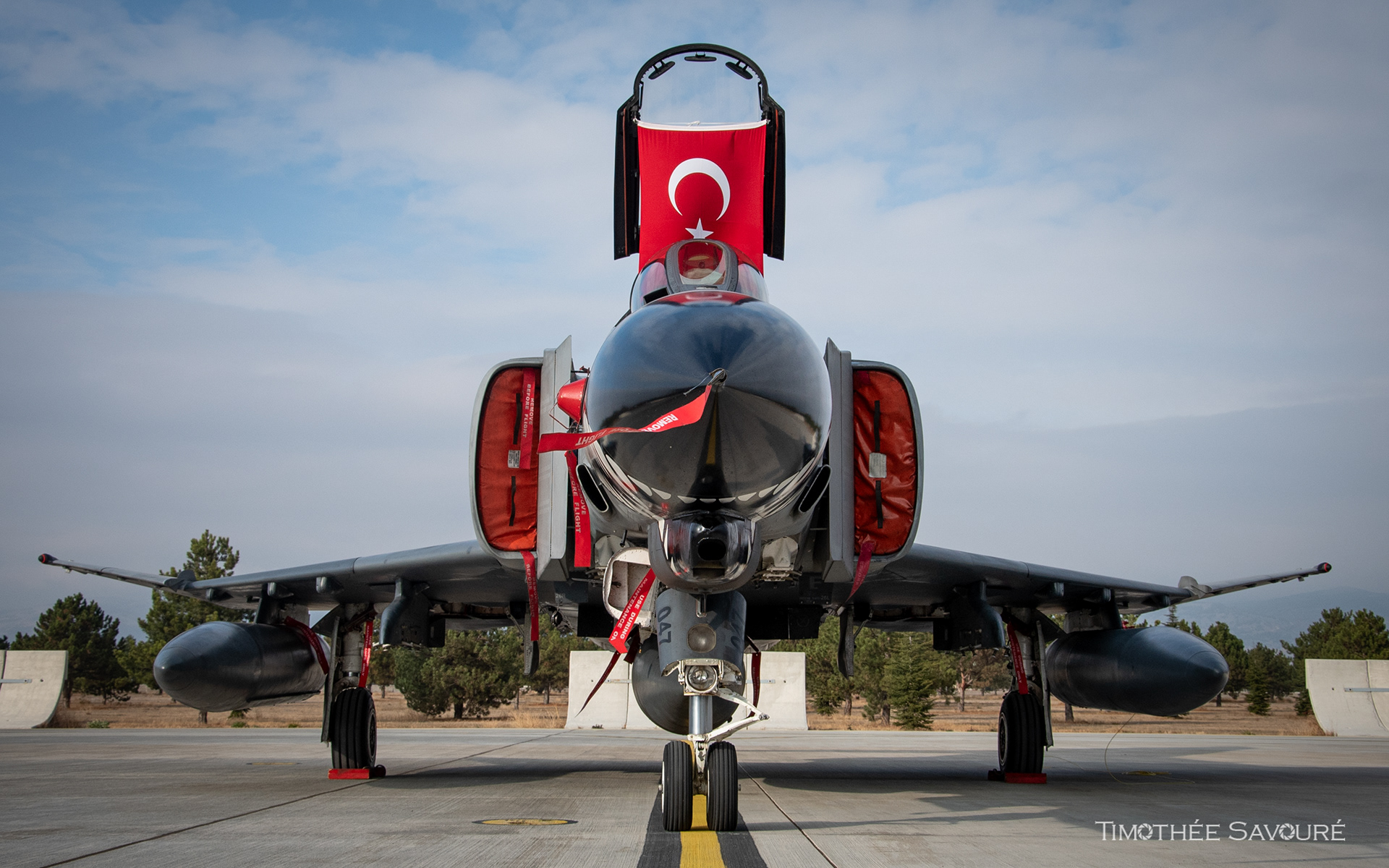
Static display with this F-4 Phantom with a Turkish flag - 73-1048
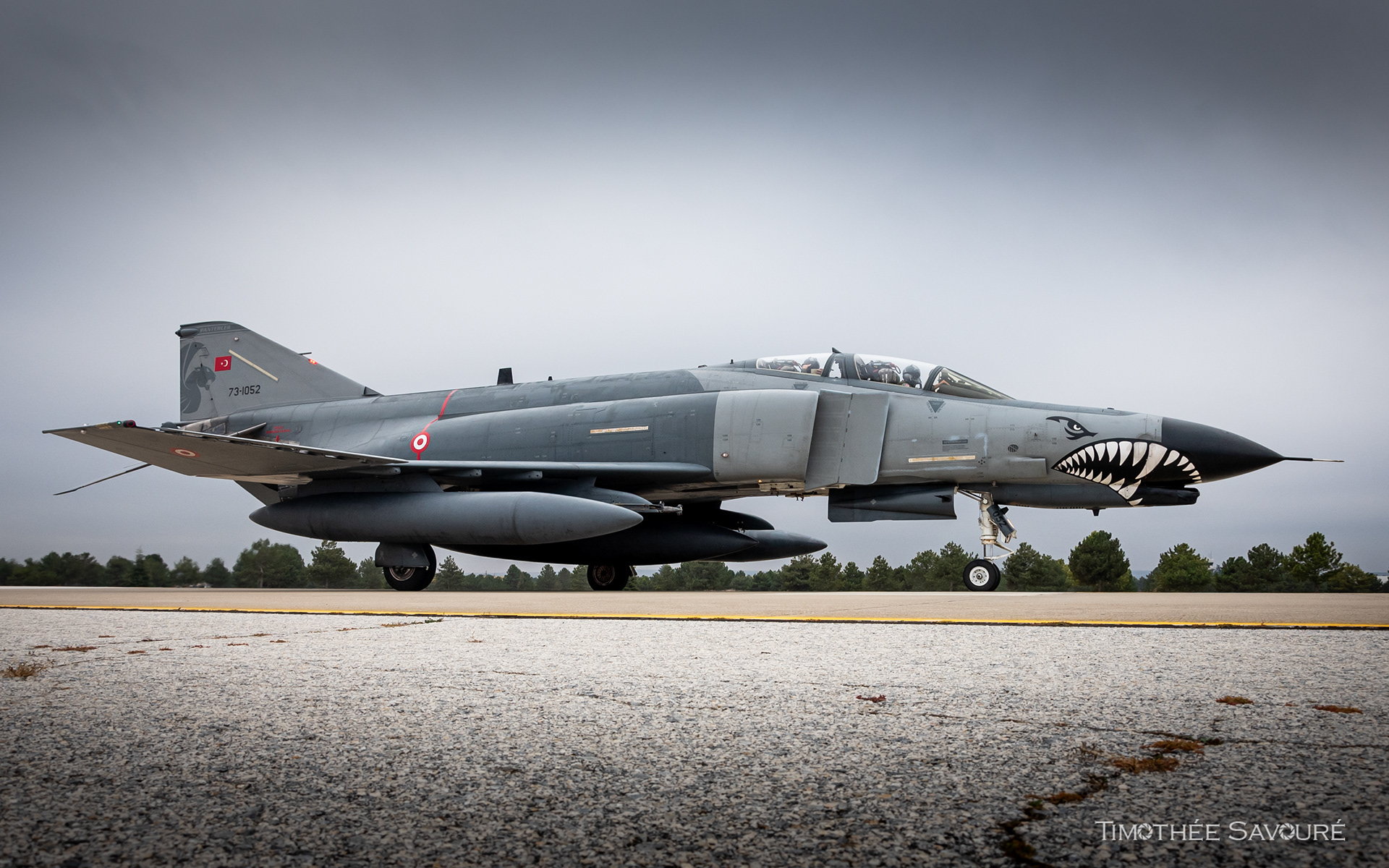
F-4E 73-1052 taxiing after landing in Eskisehir
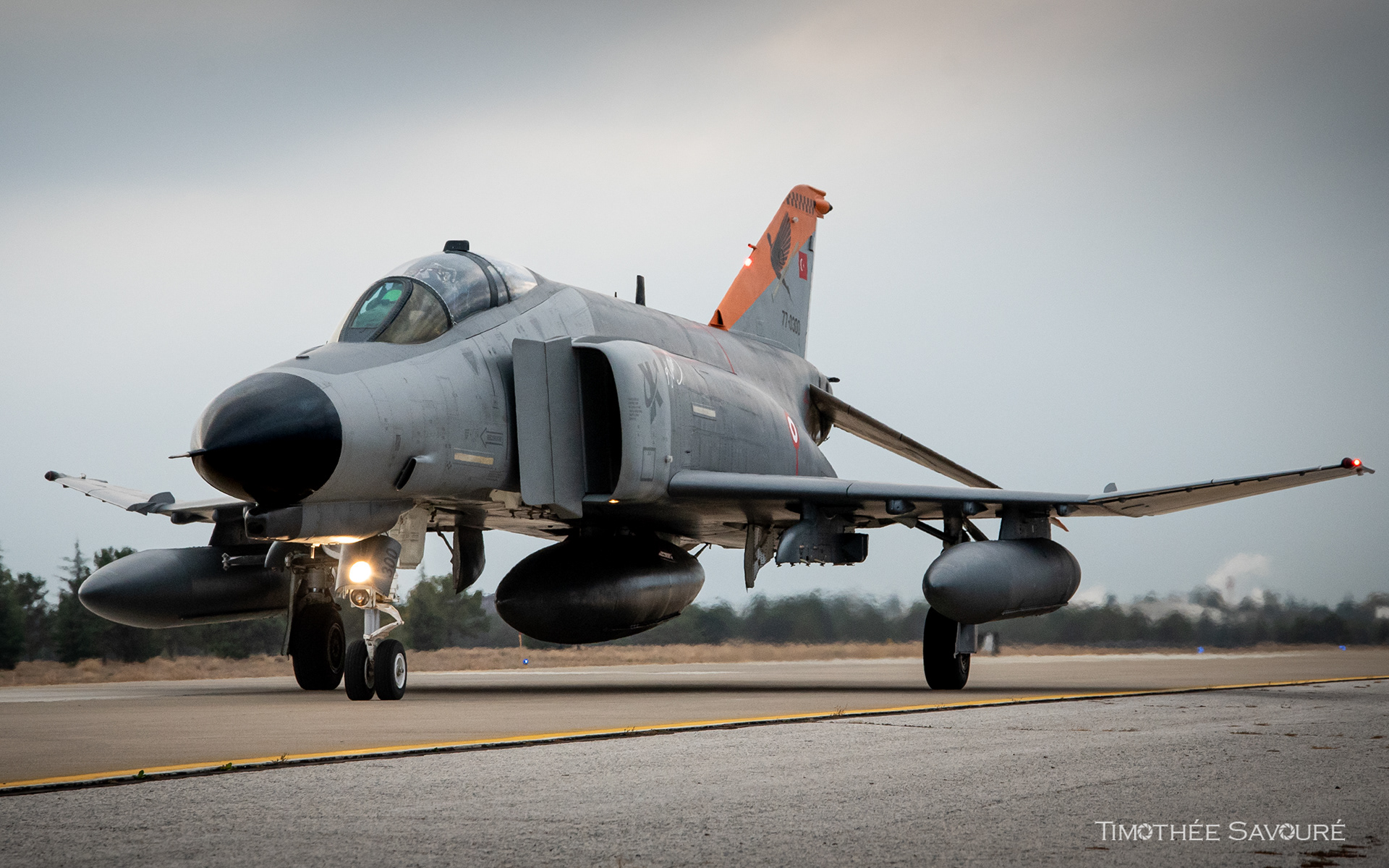
Rare F-4E Phantom from the 401 Filo taxiing - 77-0300
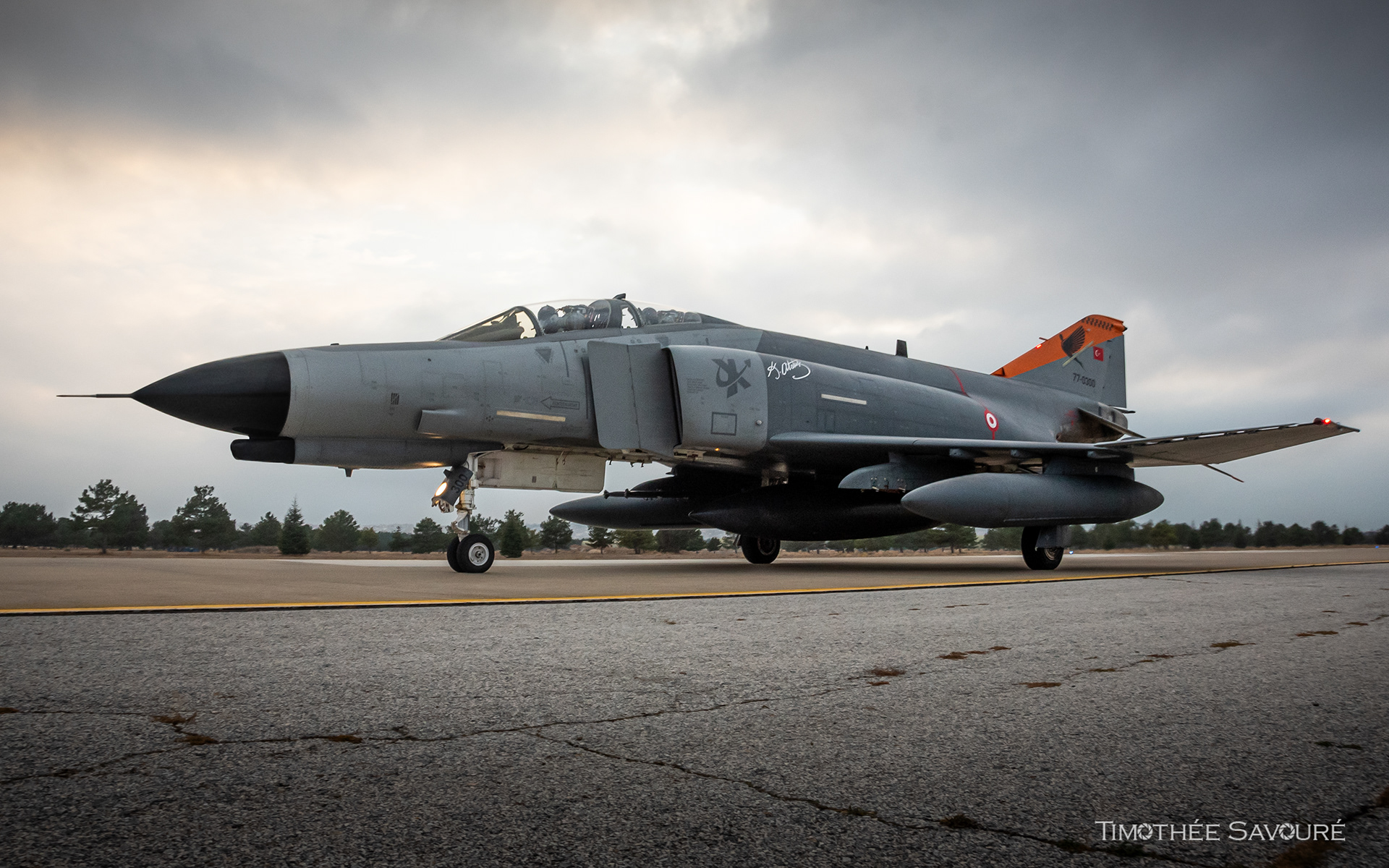
Rare F-4E Phantom from the 401 Filo taxiing - 77-0300
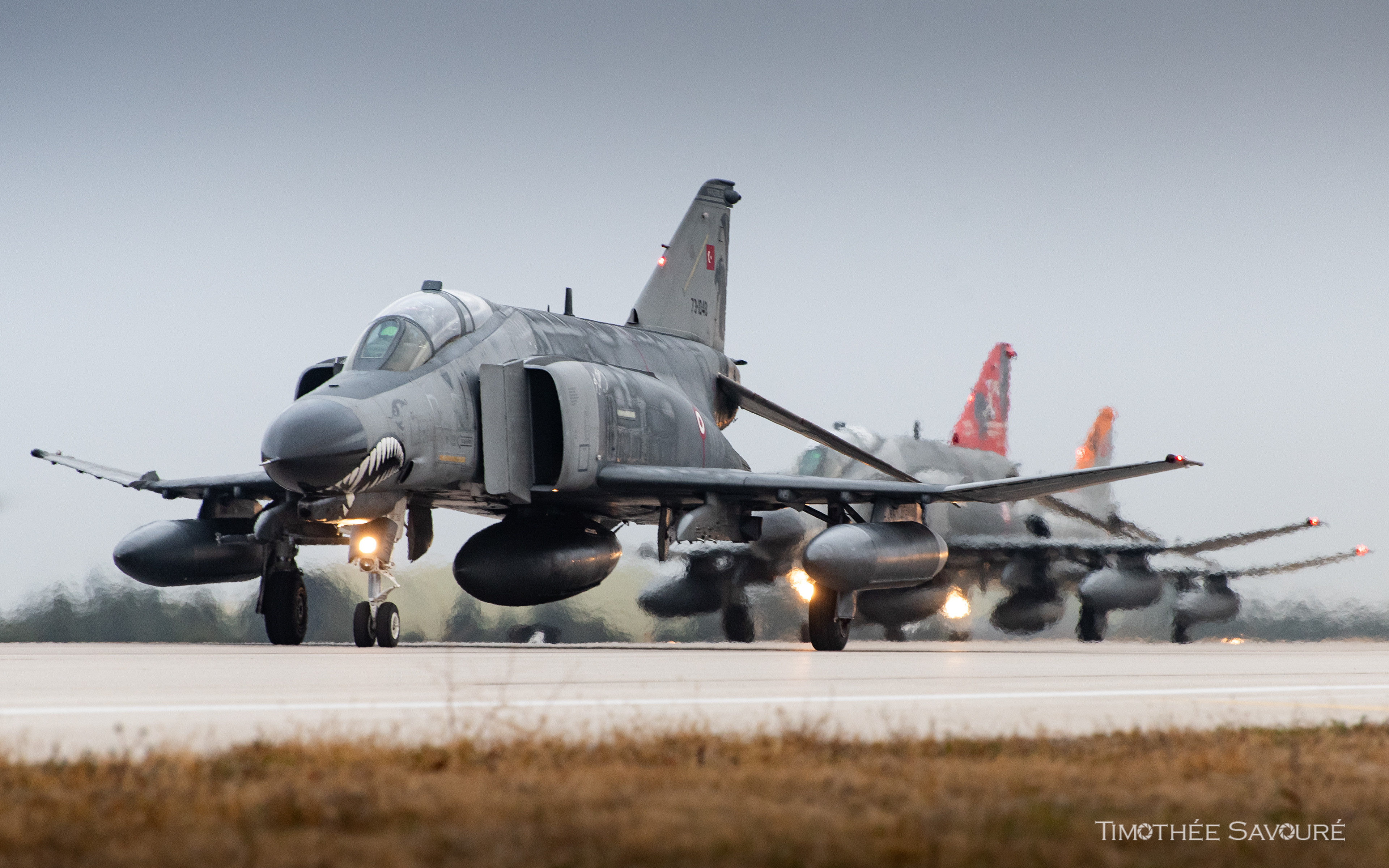
Three F-4s taxiing during the Turkish Air Force Elephant Walk
